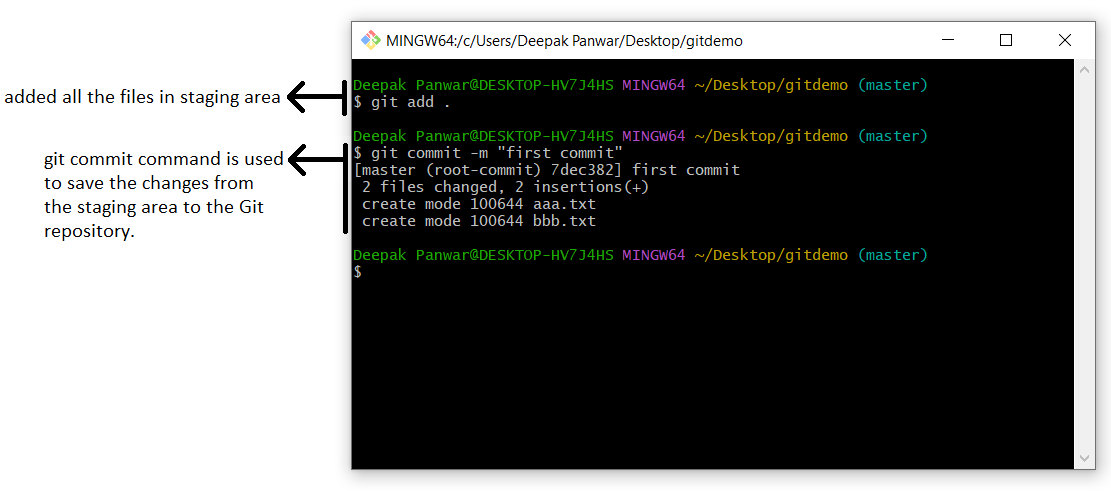Save Changes to Repository - git commit
Introduction
-
git commitcommand is used to save the changes from the staging area to the Git repository. -
Below is the diagram represents the working of
git commitcommand :-
- It saves the state of your project, including all tracked files.
-
When you make a commit in Git, it is simply added to the currently active branch.

- Each commit has a unique identifier (SHA-1 hash), allowing you to track changes accurately.
-
A commit usually includes a commit message, describing the purpose of the change. For example :
git commit -m "message" - Commits help in version control, enabling rollback to previous states if needed.
-
You can see the history of your commits using
git logto understand how your project has changed over time.
Note:
Your commits stay only on your computer until you use
git push to send them to a remote repository like GitHub or GitLab.
How to use git commit ?
-
Stage your changes by any one below command:
-
git add <file-name># Stages a specific file -
git add .# Stages all changes in the directory
-
-
Commit your changes:
-
git commit -m "Your commit message here"# Commits with a message
-
-
The command will show the following:
-
Different ways to use git commit ?
-
Commit with a Message:
-
git commit -m "Your commit message" - Saves staged changes with a short description.
- This command is the most commonly used way to commit changes in Git.
-
-
Commit Only Specific Files:
-
git commit filename.txt -m "Commit message" - Commits only the specified file(s).
-
-
Commit with a Default Message Editor:
-
git commit - Opens the default editor to write a commit message.
-
-
Commit All Tracked Files (Skip
git add):-
git commit -a -m "Your commit message" - Automatically stages and commits modified and deleted files (but not new untracked files).
-
-
Amend the Last Commit:
-
git commit --amend -m "Updated commit message" - Modifies the last commit (useful for fixing commit messages or adding missed changes).
-
Help Us Get Better Every Day
Your feedback helps us grow! If there's anything we can fix or improve, please let us know.
We’re here to make our tutorials better based on your thoughts and suggestions.




